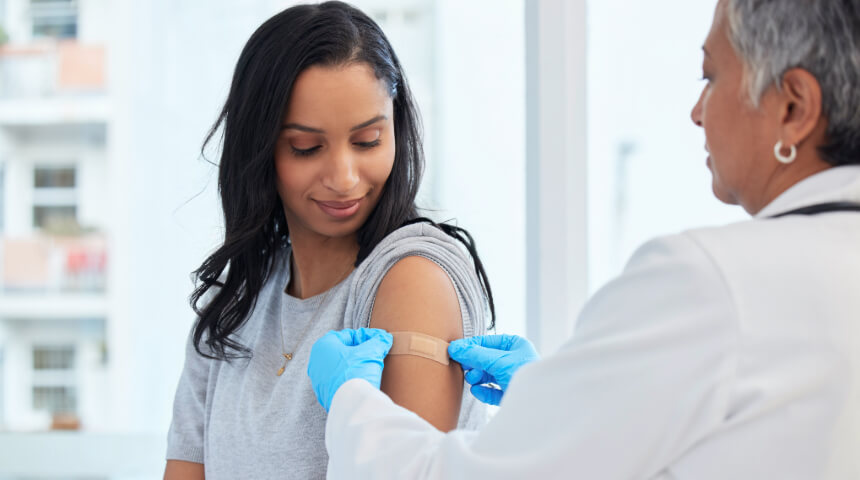If you had chickenpox when you were young, you may think that after the intense itching and blistering passed, you were done with the disease. But the same virus — varicella-zoster — that causes chickenpox stays dormant inside you even after the symptoms pass. And years later, that virus can reactivate as shingles.
Symptoms of Shingles
Most Americans (99 percent) have had chickenpox — even if they don’t remember it. That means most people are susceptible to the shingles rash that has remained inactive in the body’s nerve tissue near the spine and brain.
When it becomes active — usually in people over 50 — shingles affects one side of the body with pain, burning and tingling, followed by a red rash and blisters, which usually wrap around the right or left side of the torso. Some people experience flu-like symptoms, such as fever, headache and tiredness.
Complications from Shingles
For some, shingles, like chickenpox, is an uncomfortable, but non-life-threatening illness. However, it can lead to complications, particularly if you’re age 60 or older, have a weakened immune system, or the rash or pain is near the eye—which could lead to irreversible eye damage. During an outbreak, you could pass the virus to anyone who has not had chickenpox, and that person could develop chickenpox — an illness that can be dangerous for some.
Shingles outbreaks can occur more than once, and in some cases, the pain from shingles continues after the outbreak is over because the illness damages nerves that send messages of pain to your brain (postherpetic neuralgia, or PHN).
About Shingrix
The shingles vaccine protects against shingles and PHN. Because of that, the Centers for Disease Control and Prevention (CDC) recommends that healthy adults, aged 50 and older, get the two dose series of the Shingrix vaccination. While another shingles vaccination is available, the CDC says that Shingrix is the preferred brand because it provides better protection. Shingrix is more than 90 percent effective at preventing shingles, according to the CDC, with protection staying at least 85 percent for the first four years post-vaccine.
If you’ve already had a shingles outbreak or have had a different shingles vaccine, the CDC still recommends getting Shingrix.
Common side effects from the vaccination include headache, muscle pain, nausea, vomiting, fever and fatigue. 
Who Shouldn’t Get Shingrix
While Shingrix provides many benefits, there are some who should not get the vaccine.
-
If you are allergic to any of the components of the vaccine, or had an allergic reaction after the first shot in the series, the CDC says you should not get Shingrix.
-
If you have not had chickenpox, and test negative for immunity to the varicella zoster virus, you should get the chickenpox vaccine instead.
-
If you currently have an outbreak of shingles, you should wait until your symptoms have cleared before getting vaccinated.
-
Women who are pregnant or breastfeeding should also wait before getting Shingrix.
Have questions about the Shingrix vaccine? Talk with your doctor about protecting yourself from the shingles virus.
We Build Relationships
We believe that maintaining a healthy lifestyle is the key to living a longer, healthier life. Orlando Health Physicians strive to build a relationship with each patient. Request an appointment with one of our primary care physicians with offices located throughout Central Florida.
Schedule an Appointment










